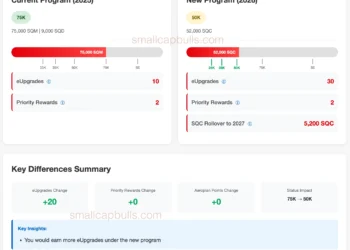NeuroStrip is at the forefront of innovation as Control Bionics (ASX: CBL) makes significant strides into the US sports performance and Japanese neurological rehabilitation markets. This advanced wireless wearable device is designed to enhance athletic capabilities and support recovery for patients, showcasing its versatility in diverse applications. With strategic partnerships like those with Neuro Elite Athletics and Stroke Lab, NeuroStrip is set to redefine how technology integrates into sports training and rehabilitation practices. By offering unique solutions, such as the NeuroBounce jump improvement program, Control Bionics aims to boost sports performance while delivering groundbreaking results in neurological rehabilitation. As the company expands its footprint, the potential for NeuroStrip to generate revenue through hardware and software subscriptions looks increasingly promising.
Introducing the NeuroStrip technology, Control Bionics is blazing a trail in the realm of advanced wearable devices tailored for athletes and rehabilitation patients alike. This cutting-edge product promises to revolutionize how individuals engage in sports training and recover from neurological conditions. With its focus on enhancing performance and delivering effective rehabilitation solutions, NeuroStrip stands out as a pivotal tool in both athletic and therapeutic settings. The collaboration with partners like Neuro Elite Athletics and Stroke Lab demonstrates its commitment to harnessing neurotechnology for superior outcomes. As Control Bionics capitalizes on these opportunities, the NeuroStrip will play a crucial role in shaping the future of sports enhancement and recovery.
The Impact of NeuroStrip on Sports Performance
NeuroStrip, the cutting-edge wireless wearable device developed by Control Bionics, is revolutionizing the sports performance landscape. By providing real-time data on an athlete’s muscle activity and biomechanics, NeuroStrip allows coaches and trainers to make data-driven decisions that can significantly enhance an athlete’s performance. This technology integrates seamlessly with training regimens, optimizing every aspect of an athlete’s preparation, from strength conditioning to recovery protocols. Athletes can now monitor their physiological responses during training, helping them to refine their techniques and maximize their athletic potential.
Additionally, the integration of NeuroBounce training programs with NeuroStrip technology creates a unique synergy that boosts athletic performance. NeuroBounce is known for its ability to increase vertical leap and explosiveness, crucial metrics for many sports. By employing NeuroStrip during NeuroBounce sessions, athletes can gather insightful data about how their bodies respond to specific exercises, allowing for tailored training adjustments that can lead to improved outcomes on the field. The collaboration between these two technologies signifies a transformative step in athletic training, setting a new standard for performance enhancement.
Expanding Horizons: Control Bionics’ Market Diversification
Control Bionics is strategically positioning itself to diversify its market reach through its innovative NeuroStrip device. By entering both the US sports performance sector and the Japanese neurological rehabilitation market, Control Bionics is not only expanding its product offerings but also reinforcing its commitment to improving patient outcomes. The partnerships forged with established players in these markets indicate a robust growth strategy aimed at capturing significant market share. With the increasing demand for advanced rehabilitation and performance technologies, Control Bionics is well-equipped to drive innovation while generating substantial revenue streams.
The company’s collaboration with Neuro Elite Athletics and Stroke Lab exemplifies its proactive approach to market penetration. By adapting NeuroStrip for different applications, Control Bionics is tapping into lucrative segments that require sophisticated neuromuscular analysis tools. This diversification approach serves as a model for other companies in the tech and health sectors looking to expand their footprint. As Control Bionics continues to innovate and adapt its technologies, it is likely to see exponential growth in both hardware sales and software subscriptions, solidifying its presence in high-demand sectors.
NeuroBounce: A Game-Changer in Athletic Training
NeuroBounce represents a groundbreaking advancement in athletic training, utilizing computerized electromyography (EMG) to elevate performance metrics significantly. This innovative program is designed to improve athletes’ vertical leaps by targeting specific muscle groups with precision training techniques. The program, which has shown the ability to increase vertical height by up to 15 centimeters in just a few sessions, is now being integrated with Control Bionics’ NeuroStrip technology, creating powerful new training methodologies. The combination of these two technologies is set to enhance training effectiveness, pushing athletes to achieve new heights in their performance.
The potential of NeuroBounce extends beyond immediate performance improvements; it also sets the stage for long-term athlete development. By implementing the NeuroBounce program across thousands of college and high school teams, Control Bionics aims to create a new generation of athletes equipped with data-driven performance insights. This not only benefits individual athletes but also enhances team dynamics and competitiveness in the sports arena. As NeuroBounce gains traction in the market, it is anticipated to become an essential tool for coaches and trainers looking to leverage cutting-edge technology to foster athletic excellence.
Rehabilitation Innovations with NeuroStrip Technology
In the realm of neurological rehabilitation, Control Bionics is making waves with its NeuroStrip technology, designed to cater to specific needs in stroke recovery. The partnership with Stroke Lab in Japan highlights the effectiveness of integrating neurology with therapy. NeuroStrip allows rehabilitation specialists to monitor muscle activity and recovery progress in real time, enabling a personalized approach to treatment. This technology not only assists in tracking patient improvements but also plays a crucial role in tailoring rehabilitation plans based on individual responses to therapy.
The adaptation of NeuroStrip for use in Japan’s advanced rehabilitation facilities signifies a major step forward in the field of neurological care. By utilizing evidence-based practices alongside cutting-edge technology, Stroke Lab and Control Bionics are redefining patient care paradigms. This collaboration aims to enhance recovery outcomes for stroke patients, showcasing the importance of technology in modern rehabilitation practices. As the demand for effective rehabilitation solutions grows, NeuroStrip is poised to play a pivotal role in transforming the landscape of neurological recovery.
The Future of Neurotechnology and Human Empowerment
As Control Bionics continues to forge strategic partnerships and expand its market presence, the future of neurotechnology looks promising. The company’s mission to leverage neurotechnology for human empowerment is not just a corporate goal but a transformative vision for individuals across various sectors. By integrating advanced devices like NeuroStrip into both sports and rehabilitation, Control Bionics is pioneering a new era where technology enhances human capabilities, driving performance, recovery, and overall well-being.
Moreover, the emphasis on innovation and adaptation in high-growth markets reflects a broader trend within the tech industry. As companies recognize the value of neurotechnology, the potential for advancements in both athletic performance and rehabilitation becomes limitless. Control Bionics is at the forefront of this movement, and with continued investment in research and development, it is well-positioned to lead the charge in developing solutions that not only improve athlete performance but also provide critical support for individuals recovering from neurological impairments.
Market Potential of NeuroStrip in Japan
The Japanese market presents a unique opportunity for Control Bionics, especially in the realm of neurological rehabilitation. The partnership with Stroke Lab highlights the adaptability of NeuroStrip technology to meet the specific needs of local healthcare providers. With Japan’s aging population and rising incidence of stroke, the demand for innovative rehabilitation solutions is at an all-time high. Control Bionics’ approach to integrating advanced neurotechnology within the Japanese healthcare framework positions it as a leader in this vital sector.
Furthermore, the emphasis on personalized care and evidence-based practices in Japan aligns perfectly with the capabilities of NeuroStrip. By providing healthcare professionals with real-time data on patient muscle activity and recovery patterns, NeuroStrip enables tailored rehabilitation strategies that enhance recovery outcomes. This focus on personalized, data-driven care not only improves the quality of rehabilitation services but also builds trust and credibility within the healthcare system, paving the way for future collaborations and market expansion.
Harnessing Data for Enhanced Athletic Performance
In the world of competitive sports, data is becoming a crucial element for success. Control Bionics recognizes the importance of harnessing data through its NeuroStrip device, which captures detailed insights into athletes’ performance metrics. By analyzing this data, coaches can identify strengths and weaknesses, allowing for targeted training interventions that enhance overall performance. The ability to track progress in real time not only motivates athletes but also fosters a culture of continuous improvement in sports training.
Moreover, the integration of NeuroBounce with NeuroStrip elevates this data-driven approach to new heights. Athletes can visualize their progress and understand the physiological changes occurring as they engage in training programs. This transparency empowers them to take ownership of their development and make informed decisions about their training regimens. As more teams and athletes adopt this data-centric approach, the landscape of sports performance will undoubtedly shift, leading to higher standards of excellence and achievement in the athletic community.
Control Bionics: Leading the Future of Neurotechnology
Control Bionics is poised to be a leader in the neurotechnology space, driven by its innovative solutions like NeuroStrip and NeuroBounce. As the company expands its market reach and embraces strategic partnerships, it is setting itself apart as a pioneer in sports performance and rehabilitation technologies. The commitment to enhancing human potential through neurotechnology is evident in every aspect of its operations, from product development to market engagement.
Looking ahead, Control Bionics is positioned to capitalize on the growing interest in neurotechnology across various sectors. As sports organizations and rehabilitation facilities increasingly recognize the value of advanced technologies, the demand for effective solutions like NeuroStrip will only continue to rise. With a strategic focus on innovation and market adaptability, Control Bionics is not only shaping the future of neurotechnology but also redefining the possibilities for athletes and individuals seeking recovery and enhancement.
Frequently Asked Questions
What is NeuroStrip and how does it enhance sports performance?
NeuroStrip is an advanced wireless wearable device developed by Control Bionics that leverages neurotechnology to monitor and improve athletic performance. By integrating with programs like NeuroBounce, it provides real-time feedback and data analysis to help athletes enhance their training efficiency, increase explosiveness, and improve their overall sports performance.
How does NeuroBounce relate to NeuroStrip and athletic training?
NeuroBounce is a proprietary jump improvement program that utilizes NeuroStrip technology for comprehensive electromyography (EMG) training. This program has been proven to increase an athlete’s vertical leap by up to 15 centimeters, making it an integral part of training regimens for athletes utilizing the NeuroStrip device.
Can NeuroStrip be used for neurological rehabilitation?
Yes, NeuroStrip is designed not only for sports performance but also for neurological rehabilitation. In collaboration with facilities like Stroke Lab in Japan, NeuroStrip technology is adapted to provide personalized care and evidence-based therapy for patients recovering from neurological conditions, showcasing its versatility in both fields.
What markets is Control Bionics targeting with NeuroStrip?
Control Bionics is expanding NeuroStrip into the US sports performance market and the Japanese neurological rehabilitation sector. Through strategic partnerships, the company aims to leverage its technology to provide significant improvements in both athletic training and patient outcomes.
What are the expected benefits of using NeuroStrip for athletes?
Athletes using NeuroStrip can expect numerous benefits, including enhanced training feedback, improved explosiveness, and measurable increases in performance metrics. The device is designed to optimize training sessions by providing insights that help athletes refine their techniques and achieve their performance goals more efficiently.
How does Control Bionics plan to generate revenue from NeuroStrip?
Control Bionics anticipates generating revenue from NeuroStrip through hardware sales, software-as-a-service subscription fees, and its share of distributions from programs like NeuroBounce. This diversified revenue model is expected to bolster the company’s financial growth while expanding its market reach.
Are there any exclusive rights associated with NeuroStrip?
Yes, as part of its strategic agreements, Control Bionics holds exclusive rights to market NeuroBounce in Australia and Japan. This exclusivity allows the company to leverage its NeuroStrip technology effectively in these regions, enhancing its competitive edge in both sports performance and rehabilitation markets.
What makes NeuroStrip a groundbreaking technology in rehabilitation?
NeuroStrip is considered groundbreaking in rehabilitation due to its integration of advanced neurotechnology and EMG capabilities, which provide therapists with precise, real-time data on muscle activity. This data is crucial for developing personalized therapy plans that enhance recovery outcomes for patients undergoing rehabilitation.
How does the NeuroStrip technology improve patient outcomes in rehabilitation?
The NeuroStrip technology improves patient outcomes by allowing for tailored therapy approaches based on real-time data analysis of muscle performance. This personalized care enhances the effectiveness of rehabilitation programs, especially for patients recovering from strokes or other neurological impairments.
What future developments can be expected from Control Bionics regarding NeuroStrip?
Control Bionics plans to continue expanding the application of NeuroStrip technology in both sports performance and rehabilitation. Future developments may include enhanced software features, broader market penetration in various regions, and additional partnerships to further leverage the device’s capabilities for athletes and patients alike.
| Key Points | Details |
|---|---|
| Expansion into US and Japan | Control Bionics has entered the US sports performance market and Japanese neurological rehabilitation markets with agreements for its NeuroStrip device. |
| Partnership with Neuro Elite Athletics (NEA) | Control acquired a 20% stake in NEA for US$250,000 to enhance the NeuroBounce program aimed at improving athletes’ vertical leap. |
| Target Market | NeuroBounce targets over 28,500 collegiate sports teams and 300,000 high school teams in the US, offering significant growth potential. |
| Agreement with Stroke Lab | Control Bionics is adapting NeuroStrip for the Japanese market through a partnership with Tokyo’s Stroke Lab for stroke recovery. |
| CEO’s Vision | CEO Jeremy Steele emphasizes the importance of these agreements for innovation and scaling the company in high-growth markets. |
Summary
NeuroStrip marks a significant advancement in Control Bionics’ strategy to penetrate both the US sports performance and Japanese rehabilitation markets. By establishing partnerships with Neuro Elite Athletics and Stroke Lab, Control Bionics not only diversifies its revenue streams through hardware sales and software subscriptions but also positions itself for long-term growth in these lucrative sectors. The company’s focus on leveraging neurotechnology for enhanced human performance is set to drive its mission forward, promising a robust and innovative future.











